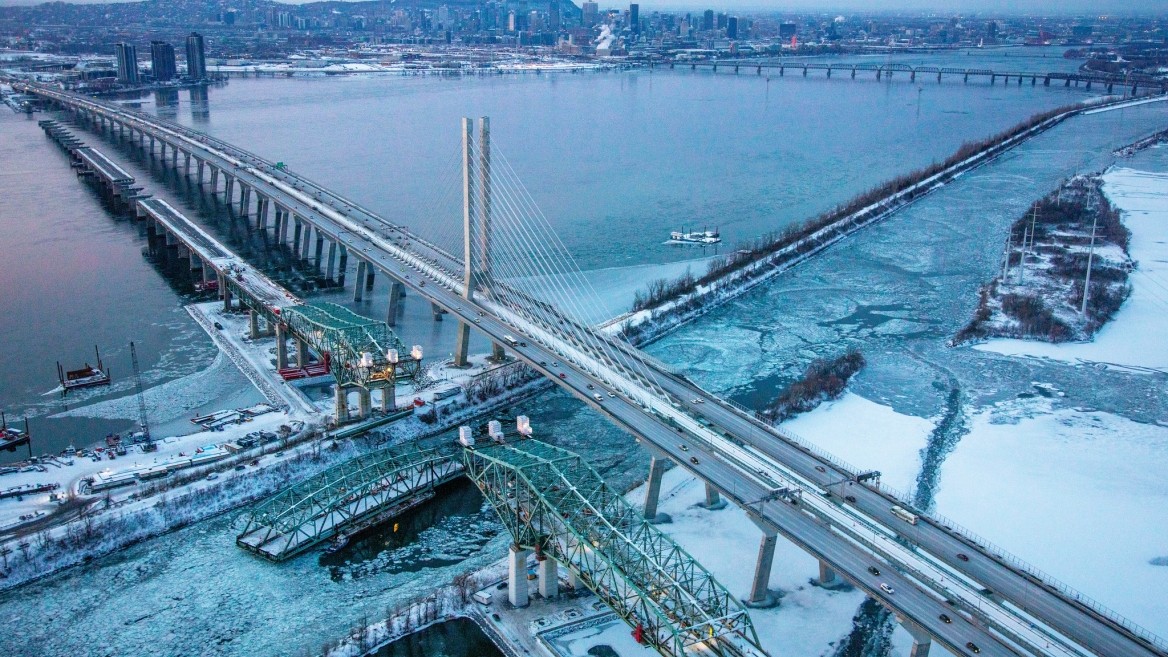Deconstruction of Original Champlain Bridge

TYLin was selected for the deconstruction of the original Champlain Bridge in Montréal, Québec, Canada.
The circa-1960 Champlain Bridge was decommissioned on June 28, 2019, following the opening of the new Samuel De Champlain Bridge, for which TYLin served as the Managing Partner and the Lead Designer. Scheduled for completion in 2024, the demolition of the old bridge requires strict adherence to environmental requirements to minimize impacts on the public and the environment.
The original 3.4-kilometre-long Champlain Bridge has two principal structural systems. The approach spans are prestressed concrete beams with a typical length of 53.75 metres (m). The steel truss seaway crossing spans, which required high clearance for ship passage, consist of four approach truss spans (close 78m each) and a main truss bridge that comprises a 117.5m anchor span, a 215.4m main span, and another 117.5m anchor span. The main span includes a 117.5m suspended span supported by two 49m cantilever arms.
TYLin is a member of the New Horizon St-Laurent consortium for this project, formed by Pomerleau Inc. and Delsan-A.I.M. Environmental Services Inc. Our role is the Design Joint Venture Lead and Engineer of Record for the main span and the Check Engineer for approaches.
Challenges include deconstructing the concrete spans over water and on land, in an urban environment and over live traffic, and deconstructing the main span over the Saint Lawrence River without impeding ship traffic in the navigational channel. The aging bridge had also undergone numerous retrofits and strengthening measures over the years, including the addition of external longitudinal and transverse post-tensioning, cladding, and supplemental truss beams.
Successfully accomplished in 2022, a critical step involved lowering the suspended span over the navigation channel onto a barge during a specific time window, when the seaway was closed for navigation during winter. The load was transferred to six strand jacks installed on top of the cantilever arms. The suspended span was then disconnected from the anchor spans by torch cutting the disengaged connecting members. The successful lowering process lasted 10 hours, with continuous monitoring and evaluation of the loads.
Project Highlights:
- Due to different conditions surrounding the bridge (water, land, traffic lanes, etc.), various deconstruction methods had to be carefully analyzed.
- The bridge was evaluated for each step of the different deconstruction methods to ensure the methods are feasible and the structural integrity of the bridge is not affected.
- Strict environmental regulations provide environmental protection measures, material reuse programs, research and development, and end-of-project shoreline development.
- Deconstruction of the anchor span trusses was checked with a member-by-member deconstruction analysis to ensure the structural integrity of the remaining and still-in-place bridge elements.
Image Credit: Ponts Jacques Cartier et Champlain Incorporée